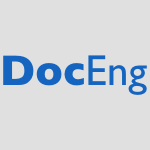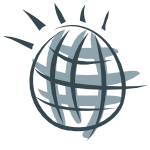196 papers:
 CASE-2015-FleischerAT #automation #composition #evaluation
CASE-2015-FleischerAT #automation #composition #evaluation- A cross-platform modular software solution for automated data evaluation applied in elemental and structural mass spectrometry (HF, MA, KT), pp. 758–763.
 DATE-2015-LocatelliVMFVKK #architecture #energy
DATE-2015-LocatelliVMFVKK #architecture #energy- Spintronic devices as key elements for energy-efficient neuroinspired architectures (NL, AFV, AM, JSF, DV, JVK, JOK, WZ, JG, DQ), pp. 994–999.
 DRR-2015-DeMDC #detection #documentation #image
DRR-2015-DeMDC #detection #documentation #image- Detection of electrical circuit elements from documents images (PD, SM, AKD, BC).
 ICPC-2015-HillSP #evaluation #feature model
ICPC-2015-HillSP #evaluation #feature model- Exploring the use of concern element role information in feature location evaluation (EH, DCS, LLP), pp. 140–150.
 CHI-2015-XuFTI #named
CHI-2015-XuFTI #named- GACA: Group-Aware Command-based Arrangement of Graphic Elements (PX, HF, CLT, TI), pp. 2787–2795.
 DHM-EH-2015-Hu0LZY #3d #analysis #development #finite
DHM-EH-2015-Hu0LZY #3d #analysis #development #finite- Development of a 3D Finite Element Model of the Chinese 50th Male for the Analysis of Automotive Impact (HH, LD, XL, CZ, YY), pp. 258–265.
 DUXU-UI-2015-KangK #documentation #experience #framework #in the cloud #smarttech #user interface
DUXU-UI-2015-KangK #documentation #experience #framework #in the cloud #smarttech #user interface- Elements of Properties of User Experience in Cloud Computing Documentation Platform According to Smart Device Screen Size Changes: Focus on Google Docs and Naver Office (MKK, SWK), pp. 551–562.
 CAiSE-2015-KoschmiderUHO #process
CAiSE-2015-KoschmiderUHO #process- Revising the Vocabulary of Business Process Element Labels (AK, MU, AH, AO), pp. 69–83.
 ICPC-2014-ZapalowskiNN #architecture #source code
ICPC-2014-ZapalowskiNN #architecture #source code- Revealing the relationship between architectural elements and source code characteristics (VZ, IN, DJN), pp. 14–25.
 ICALP-v1-2014-KlauckP #algorithm #interactive #problem #streaming
ICALP-v1-2014-KlauckP #algorithm #interactive #problem #streaming- An Improved Interactive Streaming Algorithm for the Distinct Elements Problem (HK, VP), pp. 919–930.
 CHI-2014-GarnerWPMM #game studies #named #representation
CHI-2014-GarnerWPMM #game studies #named #representation- i-dentity: innominate movement representation as engaging game element (JG, GW, SP, MM, FM), pp. 2181–2190.
 DUXU-TMT-2014-AvilaL #usability
DUXU-TMT-2014-AvilaL #usability- Relationship between Elements of the Usability and Emotions Reported after Use: A Mexican Case (ICLÁ, LRPL), pp. 285–295.
 HCI-TMT-2014-PhotiadisZ #3d #design #experience #user interface #visualisation
HCI-TMT-2014-PhotiadisZ #3d #design #experience #user interface #visualisation- The Formulation and Visualization of 3D Avatar Design, Including Three Basic Theoretical Elements: Aesthetic, User Experience and Psychology (TP, PZ), pp. 134–144.
 KDD-2014-Ting #approximate
KDD-2014-Ting #approximate- Streamed approximate counting of distinct elements: beating optimal batch methods (DT), pp. 442–451.
 KMIS-2014-Bures #aspect-oriented #case study #difference #xml
KMIS-2014-Bures #aspect-oriented #case study #difference #xml- Technical Aspects of XML Format — Case Study — Differences between Saving Data into Element and Attribute (OB), pp. 354–359.
 ECMFA-2014-AtkinsonG
ECMFA-2014-AtkinsonG- Level-Agnostic Designation of Model Elements (CA, RG), pp. 18–34.
 DAC-2013-ZhouLJ #3d #complexity #finite #linear #multi #scalability
DAC-2013-ZhouLJ #3d #complexity #finite #linear #multi #scalability- A direct finite element solver of linear complexity for large-scale 3-D circuit extraction in multiple dielectrics (BZ, HL, DJ), p. 6.
 DATE-2013-SeiterWSD #ocl #specification #uml #verification
DATE-2013-SeiterWSD #ocl #specification #uml #verification- Determining relevant model elements for the verification of UML/OCL specifications (JS, RW, MS, RD), pp. 1189–1192.
 SIGMOD-2013-TruongBDS #named #xml
SIGMOD-2013-TruongBDS #named #xml- MESSIAH: missing element-conscious SLCA nodes search in XML data (BQT, SSB, CED, AS), pp. 37–48.
 CSMR-2013-TothNFS #source code #using #version control
CSMR-2013-TothNFS #source code #using #version control- Using Version Control History to Follow the Changes of Source Code Elements (ZT, GN, RF, IS), pp. 319–322.
 ICSM-2013-HillSPV
ICSM-2013-HillSPV- Differentiating Roles of Program Elements in Action-Oriented Concerns (EH, DS, LLP, KVS), pp. 376–379.
 ICALP-v1-2013-Uppman #complexity
ICALP-v1-2013-Uppman #complexity- The Complexity of Three-Element Min-Sol and Conservative Min-Cost-Hom (HU), pp. 804–815.
 DHM-SET-2013-AlmAGEVD #interactive #people
DHM-SET-2013-AlmAGEVD #interactive #people- Supporting Conversation for People with Dementia by Introducing a Computer-Based Third Element to the Interaction (NA, AA, GG, ME, PV, RD), pp. 143–149.
 DUXU-WM-2013-WelchK #mobile #usability
DUXU-WM-2013-WelchK #mobile #usability- Determining the Effect of Menu Element Size on Usability of Mobile Applications (SW, SJK), pp. 740–749.
 HCI-AMTE-2013-FuglerudS #design
HCI-AMTE-2013-FuglerudS #design- The Link between Inclusive Design and Innovation: Some Key Elements (KSF, DS), pp. 41–50.
 HCI-AMTE-2013-SantosM #automation #design #identification #implementation #interactive
HCI-AMTE-2013-SantosM #automation #design #identification #implementation #interactive- Design and Implementation of ErgoIdentifier: A Tool for Automated Identification of Websites Interaction Elements (OFdS, MM), pp. 249–255.
 HCI-UC-2013-RodilJRW #identification #representation
HCI-UC-2013-RodilJRW #identification #representation- Identifying and Representing Elements of Local Contexts in Namibia (KR, KLJ, MR, HWT), pp. 332–341.
 HIMI-HSM-2013-KimKL #design #standard #verification
HIMI-HSM-2013-KimKL #design #standard #verification- Designing and Verifying Application Schema by Applying Standard Element for Managing Ocean Observation Data (STK, LKK, TYL), pp. 110–115.
 SIGIR-2013-NoroziA
SIGIR-2013-NoroziA- Kinship contextualization: utilizing the preceding and following structural elements (MAN, PA), pp. 837–840.
 ICSE-2013-RigbyR #documentation
ICSE-2013-RigbyR #documentation- Discovering essential code elements in informal documentation (PCR, MPR), pp. 832–841.
 ICST-2013-LeottaCRS #case study #industrial #locality #testing #web
ICST-2013-LeottaCRS #case study #industrial #locality #testing #web- Repairing Selenium Test Cases: An Industrial Case Study about Web Page Element Localization (ML, DC, FR, CS), pp. 487–488.
 ICGT-2012-GolasLEG #flexibility #formal method #graph grammar #towards
ICGT-2012-GolasLEG #flexibility #formal method #graph grammar #towards- Toward Bridging the Gap between Formal Foundations and Current Practice for Triple Graph Grammars — Flexible Relations between Source and Target Elements (UG, LL, HE, HG), pp. 141–155.
 CHI-2012-FourneyLMT #documentation #exclamation #interface #online #quote
CHI-2012-FourneyLMT #documentation #exclamation #interface #online #quote- “Then click ok!”: extracting references to interface elements in online documentation (AF, BL, RM, MAT), pp. 35–38.
 ECIR-2012-AtilganAU #keyword #on the #xml
ECIR-2012-AtilganAU #keyword #on the #xml- On the Size of Full Element-Indexes for XML Keyword Search (DA, ISA, ÖU), pp. 556–560.
 ICPR-2012-BaiZX #detection #linear #multi
ICPR-2012-BaiZX #detection #linear #multi- Multi scale multi structuring element top-hat transform for linear feature detection (XB, FZ, BX), pp. 1920–1923.
 KDIR-2012-Delmonte #dependence #information management #null
KDIR-2012-Delmonte #dependence #information management #null- Predicate Argument Structures for Information Extraction from Dependency Representations — Null Elements are Missing (RD), pp. 463–474.
 MLDM-2012-Kovacs #distance #reduction
MLDM-2012-Kovacs #distance #reduction- Reduction of Distance Computations in Selection of Pivot Elements for Balanced GHT Structure (LK), pp. 50–62.
 DAC-2011-HsiaoD #bound #parallel #scalability
DAC-2011-HsiaoD #bound #parallel #scalability- A highly scalable parallel boundary element method for capacitance extraction (YCH, LD), pp. 552–557.
 ICDAR-2011-SuCL #novel
ICDAR-2011-SuCL #novel- Recognizing Text Elements for SVG Comic Compression and Its Novel Applications (CYS, RIC, JCL), pp. 1329–1333.
 ITiCSE-2011-BoyceCPCB #education #evaluation #game studies #how #learning #motivation
ITiCSE-2011-BoyceCPCB #education #evaluation #game studies #how #learning #motivation- Experimental evaluation of BeadLoom game: how adding game elements to an educational tool improves motivation and learning (AKB, AC, SP, DC, TB), pp. 243–247.
 CSCW-2011-PelaezC #collaboration #documentation #interactive
CSCW-2011-PelaezC #collaboration #documentation #interactive- Interactions with real and digital elements for collaborative document creation (MPP, IC), pp. 697–700.
 DUXU-v1-2011-KisoKKYJF #mobile #usability
DUXU-v1-2011-KisoKKYJF #mobile #usability- Clarification of Kansei Elements of Attractiveness Related to Usability for Long Term Mobile Phone Users (HK, NK, KK, MY, HJ, SF), pp. 602–610.
 HCI-UA-2011-LeeSP #design #interactive
HCI-UA-2011-LeeSP #design #interactive- Effect of Aesthetic Design Elements on Tabletop Display Interaction (HL, HJS, JHP), pp. 484–489.
 IDGD-2011-ChangH11a #case study #design
IDGD-2011-ChangH11a #case study #design- A Study on the Application of Cultural Elements in Product Design (WCC, MrH), pp. 3–10.
 IDGD-2011-WangG #development #experience #mobile #network #research #user interface
IDGD-2011-WangG #development #experience #mobile #network #research #user interface- The User’s Emotional Elements Research of Mobile Network Products Development Guided by User Experience (YW, QG), pp. 332–340.
 KEOD-2011-AarnioSK #industrial #lightweight #semantics
KEOD-2011-AarnioSK #industrial #lightweight #semantics- A Lightweight Element Matching Method for Industrial Terminology Harmonization — Exploiting Minimal Semantics based on Naming Conventions (PA, SS, KK), pp. 390–395.
 ECMFA-2011-GreenyerPR #incremental #reuse
ECMFA-2011-GreenyerPR #incremental #reuse- Preventing Information Loss in Incremental Model Synchronization by Reusing Elements (JG, SP, JR), pp. 144–159.
 SAC-2011-AlmeidaC #enterprise #on the #ontology #towards
SAC-2011-AlmeidaC #enterprise #on the #ontology #towards- On the elements of an enterprise: towards an ontology-based account (JPAA, ECSC), pp. 323–330.
 DocEng-2010-JiaoLBXL
DocEng-2010-JiaoLBXL- Style and branding elements extraction from businessweb sites (LJ, SHL, NB, YX, JL), pp. 231–234.
 PODS-2010-KaneNW #algorithm #problem
PODS-2010-KaneNW #algorithm #problem- An optimal algorithm for the distinct elements problem (DMK, JN, DPW), pp. 41–52.
 ICPC-2010-AbebeT #concept #natural language #parsing
ICPC-2010-AbebeT #concept #natural language #parsing- Natural Language Parsing of Program Element Names for Concept Extraction (SLA, PT), pp. 156–159.
 CIKM-2010-SunPL #graph
CIKM-2010-SunPL #graph- Support elements in graph structured schema reintegration (XS, RP, MKL), pp. 1361–1364.
 ECIR-2010-AltingovdeAU #retrieval #using #xml
ECIR-2010-AltingovdeAU #retrieval #using #xml- XML Retrieval Using Pruned Element-Index Files (ISA, DA, ÖU), pp. 306–318.
 ECIR-2010-BoudinSN #detection #information retrieval
ECIR-2010-BoudinSN #detection #information retrieval- Improving Medical Information Retrieval with PICO Element Detection (FB, LS, JYN), pp. 50–61.
 ICPR-2010-PletschacherA #analysis #framework
ICPR-2010-PletschacherA #analysis #framework- The PAGE (Page Analysis and Ground-Truth Elements) Format Framework (SP, AA), pp. 257–260.
 SIGIR-2010-OstergrenYE #visual notation #web
SIGIR-2010-OstergrenYE #visual notation #web- The value of visual elements in web search (MO, SyY, ENE), pp. 867–868.
 MoDELS-v1-2010-AmbroziewiczS #interactive #logic #reuse
MoDELS-v1-2010-AmbroziewiczS #interactive #logic #reuse- Application Logic Patterns — Reusable Elements of User-System Interaction (AA, MS), pp. 241–255.
 MoDELS-v2-2010-MorinKKJ #aspect-oriented #flexibility #modelling #policy
MoDELS-v2-2010-MorinKKJ #aspect-oriented #flexibility #modelling #policy- Flexible Model Element Introduction Policies for Aspect-Oriented Modeling (BM, JK, JK, JMJ), pp. 63–77.
 HPDC-2010-KieferVL #pipes and filters
HPDC-2010-KieferVL #pipes and filters- Pairwise Element Computation with MapReduce (TK, PBV, WL), pp. 826–833.
 CAV-2010-ZhouHWG #array #bound #on the
CAV-2010-ZhouHWG #array #bound #on the- On Array Theory of Bounded Elements (MZ, FH, BYW, MG), pp. 570–584.
 CSL-2010-MartinM #complexity #first-order #logic #similarity
CSL-2010-MartinM #complexity #first-order #logic #similarity- The Complexity of Positive First-Order Logic without Equality II: The Four-Element Case (BM, JM), pp. 426–438.
 DATE-2009-AnsaloniBP #architecture #embedded
DATE-2009-AnsaloniBP #architecture #embedded- Heterogeneous coarse-grained processing elements: A template architecture for embedded processing acceleration (GA, PB, LP), pp. 542–547.
 ICDAR-2009-SaundLS #documentation #image #named #user interface
ICDAR-2009-SaundLS #documentation #image #named #user interface- PixLabeler: User Interface for Pixel-Level Labeling of Elements in Document Images (ES, JL, PS), pp. 646–650.
 WCRE-1999-AnquetilRAAHPPP99a #architecture #java #named #source code
WCRE-1999-AnquetilRAAHPPP99a #architecture #java #named #source code- JavaCompExt: Extracting Architectural Elements from Java Source Code (NA, JCR, PA, GA, PH, TP, DP, VP), pp. 317–318.
 ICALP-v1-2009-ChekuriK #graph #reduction
ICALP-v1-2009-ChekuriK #graph #reduction- A Graph Reduction Step Preserving Element-Connectivity and Applications (CC, NK), pp. 254–265.
 DHM-2009-MihalyiDA #framework #modelling
DHM-2009-MihalyiDA #framework #modelling- A Contribution to Integrated Driver Modeling: A Coherent Framework for Modeling Both Non-routine and Routine Elements of the Driving Task (AM, BD, TA), pp. 433–442.
 HCD-2009-Liang #architecture
HCD-2009-Liang #architecture- Redefining Architectural Elements by Digital Media (KhL), pp. 995–1002.
 HCI-AUII-2009-OchoaAG #collaboration #comprehension #mobile #requirements
HCI-AUII-2009-OchoaAG #collaboration #comprehension #mobile #requirements- Understanding the Relationship between Requirements and Context Elements in Mobile Collaboration (SFO, RA, LAG), pp. 67–76.
 HCI-VAD-2009-HsuC09a #design #game studies #interface #multi #online
HCI-VAD-2009-HsuC09a #design #game studies #interface #multi #online- Exploring the Elements and Design Criteria of Massively-Multiplayer Online Role-Playing Game (MMORPG) Interfaces (CCH, ECHC), pp. 325–334.
 HCI-VAD-2009-PohlDM #generative #ide #multi
HCI-VAD-2009-PohlDM #generative #ide #multi- From Paper to Module — An Integrated Environment for Generating SCORM Compliant Moodle Courses Out of Text and Multimedia Elements (HMP, BD, JTM), pp. 196–203.
 OCSC-2009-NitscheKAH #adaptation #enterprise #social #user interface
OCSC-2009-NitscheKAH #adaptation #enterprise #social #user interface- Social Adaptation of ERP Software: Tagging UI Elements (MN, MCK, UA, MH), pp. 391–400.
 CIKM-2009-BhatiaLM #generative
CIKM-2009-BhatiaLM #generative- Generating synopses for document-element search (SB, SL, PM), pp. 2003–2006.
 SAC-2009-BangerthJ #adaptation #finite #problem
SAC-2009-BangerthJ #adaptation #finite #problem- Adaptive finite element methods for nonlinear inverse problems (WB, AJ), pp. 1002–1006.
 DAC-2008-GorjiaraG #architecture #automation #refinement
DAC-2008-GorjiaraG #architecture #automation #refinement- Automatic architecture refinement techniques for customizing processing elements (BG, DG), pp. 379–384.
 DAC-2008-PaikS #multi #optimisation #standard
DAC-2008-PaikS #multi #optimisation #standard- Multiobjective optimization of sleep vector for zigzag power-gated circuits in standard cell elements (SP, YS), pp. 600–605.
 DATE-2008-NagpalGK #approach #design #using
DATE-2008-NagpalGK #approach #design #using- A Delay-efficient Radiation-hard Digital Design Approach Using CWSP Elements (CN, RG, SPK), pp. 354–359.
 ICSM-2008-ZhuLKM #design #maintenance
ICSM-2008-ZhuLKM #design #maintenance- Characterizing maintainability concerns in autonomic element design (QZ, LL, HMK, HAM), pp. 197–206.
 LATA-2008-Petersen #sorting #turing machine
LATA-2008-Petersen #sorting #turing machine- Sorting and Element Distinctness on One-Way Turing Machines (HP), pp. 433–439.
 ICPR-2008-ManoharSGS #finite #modelling
ICPR-2008-ManoharSGS #finite #modelling- Finite element modeling of facial deformation in videos for computing strain pattern (VM, MS, DBG, SS), pp. 1–4.
 KDD-2008-HwangKRZ #graph #mining
KDD-2008-HwangKRZ #graph #mining- Bridging centrality: graph mining from element level to group level (WH, TK, MR, AZ), pp. 336–344.
 SAC-2008-FreixasJS #composition #geometry
SAC-2008-FreixasJS #composition #geometry- Elements for a modular dynamic geometry system (MF, RJA, ASR), pp. 1816–1820.
 DAC-2007-ZhouLS #bound #embedded #hybrid #multi #performance #using
DAC-2007-ZhouLS #bound #embedded #hybrid #multi #performance #using- Fast Capacitance Extraction in Multilayer, Conformal and Embedded Dielectric using Hybrid Boundary Element Method (NYZ, ZL, WS), pp. 835–840.
 ICSM-2007-WenzelHK
ICSM-2007-WenzelHK- Tracing Model Elements (SW, HH, UK), pp. 104–113.
 DLT-2007-Blanchet-SadriBP #set #word
DLT-2007-Blanchet-SadriBP #set #word- Two Element Unavoidable Sets of Partial Words (FBS, NCB, JP), pp. 96–107.
 CHI-2007-DunneS
CHI-2007-DunneS- Psychophysical elements of wearability (LED, BS), pp. 299–302.
 CHI-2007-LampeES #network #online #social
CHI-2007-LampeES #network #online #social- A familiar face(book): profile elements as signals in an online social network (CL, NBE, CS), pp. 435–444.
 CHI-2007-WigdorSFB #multi #visual notation
CHI-2007-WigdorSFB #multi #visual notation- Perception of elementary graphical elements in tabletop and multi-surface environments (DW, CS, CF, RB), pp. 473–482.
 DHM-2007-HaoJZZ #3d #analysis #finite
DHM-2007-HaoJZZ #3d #analysis #finite- A Finite Element 3D Model of in Vivo Human Knee Joint Based on MRI for the Tibiofemoral Joint Contact Analysis (ZH, DJ, YZ, JZ), pp. 616–622.
 DHM-2007-HuWWJJZCZ #analysis #component #finite
DHM-2007-HuWWJJZCZ #analysis #component #finite- Finite Element Analysis of a Six-Component Force Sensor for the Trans-Femoral Prosthesis (XH, RW, FW, DJ, XJ, JZ, FC, SZ), pp. 633–639.
 DHM-2007-LeeFCBEAP #finite #modelling #using
DHM-2007-LeeFCBEAP #finite #modelling #using- Finite Element Modeling to Aid in Refining the Rehabilitation of Amputees Using Osseointegrated Prostheses (WL, LF, NJC, RB, JE, CA, MJP), pp. 655–658.
 OCSC-2007-ChoY #how #programming
OCSC-2007-ChoY #how #programming- How to See the Beauty That Is Not There : The Aesthetic Element of Programming in the Computer- Based Media Art (HC, JY), pp. 292–300.
 ICEIS-J-2007-YasuiLGWT07a #collaboration #online
ICEIS-J-2007-YasuiLGWT07a #collaboration #online- Key Elements Extraction in Online Collaborative Environments (NIY, XL, DEG, YW, HT), pp. 148–159.
 ECIR-2007-KongL #documentation #modelling #multi #network #xml
ECIR-2007-KongL #documentation #modelling #multi #network #xml- Combining Multiple Sources of Evidence in XML Multimedia Documents: An Inference Network Incorporating Element Language Models (ZK, ML), pp. 716–719.
 SEKE-2007-VasconcelosW #architecture #evaluation #quality #specification
SEKE-2007-VasconcelosW #architecture #evaluation #quality #specification- Architectural Elements Recovery and Quality Evaluation to Assist in Reference Architectures Specification (APVdV, CMLW), pp. 494–499.
 SAC-2007-ChenTL
SAC-2007-ChenTL- A priority assignment strategy of processing elements over an on-chip bus (YSC, SJT, SWL), pp. 1176–1180.
 SAC-2007-HuangJL
SAC-2007-HuangJL- Finding putative core promoter elements with position-dependent consensuses (YFH, YCJ, SWL), pp. 138–139.
 CASE-2006-LiLWC #automation #component #equation #generative #graph #linear #using
CASE-2006-LiLWC #automation #component #equation #generative #graph #linear #using- Automatic Generation of Component-level Dynamic Equations Using Extensible Element Linear Graph Method (YL, ZL, HW, YC), pp. 118–123.
 DATE-2006-AsadiSTK #analysis
DATE-2006-AsadiSTK #analysis- Vulnerability analysis of L2 cache elements to single event upsets (HA, VS, MBT, DRK), pp. 1276–1281.
 DATE-2006-NepalBMPZ #design #fault #memory management
DATE-2006-NepalBMPZ #design #fault #memory management- Designing MRF based error correcting circuits for memory elements (KN, RIB, JLM, WRP, AZ), pp. 792–793.
 DATE-DF-2006-MadingLPSBEH #architecture #fixpoint
DATE-DF-2006-MadingLPSBEH #architecture #fixpoint- The vector fixed point unit of the synergistic processor element of the cell architecture processor (NM, JL, JP, RS, SB, SE, WH), pp. 244–248.
 DocEng-2006-Matulic #documentation #named #reuse
DocEng-2006-Matulic #documentation #named #reuse- SmartPublisher: document creation on pen-based systems via document element reuse (FM), pp. 182–183.
 ICSM-2006-ShenM #architecture #named
ICSM-2006-ShenM #architecture #named- ESDM — A Method for Developing Evolutionary Scenarios for Analysing the Impact of Historical Changes on Architectural Elements (YS, NHM), pp. 45–54.
 MSR-2006-KimN #analysis #multi
MSR-2006-KimN #analysis #multi- Program element matching for multi-version program analyses (MK, DN), pp. 58–64.
 WCRE-2006-KnodelMN #architecture #comprehension #empirical #visual notation #visualisation
WCRE-2006-KnodelMN #architecture #comprehension #empirical #visual notation #visualisation- Understanding Software Architectures by Visualization — An Experiment with Graphical Elements (JK, DM, MN), pp. 39–50.
 CIKM-2006-OgilvieL #evaluation #retrieval #xml
CIKM-2006-OgilvieL #evaluation #retrieval #xml- Investigating the exhaustivity dimension in content-oriented XML element retrieval evaluation (PO, ML), pp. 84–93.
 SIGIR-2006-BetsiLTT #retrieval #xml
SIGIR-2006-BetsiLTT #retrieval #xml- User expectations from XML element retrieval (SB, ML, AT, TT), pp. 611–612.
 SIGIR-2006-LarsenTM #documentation #retrieval #xml
SIGIR-2006-LarsenTM #documentation #retrieval #xml- Is XML retrieval meaningful to users?: searcher preferences for full documents vs. elements (BL, AT, SM), pp. 663–664.
 SIGIR-2006-RamirezWV #using #xml
SIGIR-2006-RamirezWV #using #xml- Using small XML elements to support relevance (GR, TW, APdV), pp. 693–694.
 SAC-2005-TruongS #behaviour #modelling #uml #using #verification
SAC-2005-TruongS #behaviour #modelling #uml #using #verification- Verification of behavioural elements of UML models using B (NTT, JS), pp. 1546–1552.
 DAC-2004-BiswasCAPID #memory management #set
DAC-2004-BiswasCAPID #memory management #set- Introduction of local memory elements in instruction set extensions (PB, VC, KA, LP, PI, ND), pp. 729–734.
 DATE-v2-2004-RahimiBD #adaptation #optimisation
DATE-v2-2004-RahimiBD #adaptation #optimisation- Timing Correction and Optimization with Adaptive Delay Sequential Element (KR, SB, CD), p. 1416.
 ITiCSE-WGR-2004-Wenderholm #challenge #research
ITiCSE-WGR-2004-Wenderholm #challenge #research- Challenges and the elements of success in undergraduate research (EW), pp. 73–75.
 IFM-2004-SeceleanuP #approach #design #uml
IFM-2004-SeceleanuP #approach #design #uml- Constituent Elements of a Correctness-Preserving UML Design Approach (TS, JP), pp. 227–246.
 SEFM-2004-Struth #automation #reasoning #set
SEFM-2004-Struth #automation #reasoning #set- Automated Element-Wise Reasoning with Sets (GS), pp. 320–329.
 CHI-2004-TerryMNY #development
CHI-2004-TerryMNY #development- Variation in element and action: supporting simultaneous development of alternative solutions (MAT, EDM, KN, YY), pp. 711–718.
 EDOC-2004-DuddyLM
EDOC-2004-DuddyLM- Elemental and Pegamento: The Final Cut — Applying the MDA Pattern (KD, ML, ZM), pp. 240–252.
 ICEIS-v1-2004-Rizopoulos #automation #semantics
ICEIS-v1-2004-Rizopoulos #automation #semantics- Automatic Discovery of Semantic Relationships Between Schema Elements (NR), pp. 3–8.
 ICEIS-v4-2004-BoppHE #weaving
ICEIS-v4-2004-BoppHE #weaving- Connecting Virtual Spaces: Shadow Objects as Key Elements for Weaving the Cooperative Space (TB, TH, BE), pp. 475–479.
 ICEIS-v4-2004-TranHD
ICEIS-v4-2004-TranHD- Incorporating the Elements of the Mase Methodology into Agent Open (QNNT, BHS, JKD), pp. 380–388.
 DAC-2003-PaulBNPT #design #modelling #multi #programmable
DAC-2003-PaulBNPT #design #modelling #multi #programmable- Schedulers as model-based design elements in programmable heterogeneous multiprocessors (JMP, AB, JEN, JJP, DET), pp. 408–411.
 DocEng-2003-BagleyBH #component #reuse #sequence
DocEng-2003-BagleyBH #component #reuse #sequence- Creating reusable well-structured PDF as a sequence of component object graphic (COG) elements (SRB, DFB, MRBH), pp. 58–67.
 ICDAR-2003-ToshihiroM #detection #documentation #image #matrix #segmentation
ICDAR-2003-ToshihiroM #detection #documentation #image #matrix #segmentation- Detection of Matrices and Segmentation of Matrix Elements in Scanned Images of Scientific Documents (KT, SM), pp. 433–437.
 ICDAR-2003-WangDL #identification #linear #using
ICDAR-2003-WangDL #identification #linear #using- Writer Identification Using Directional Element Features and Linear Transform (XW, XD, HL), pp. 942–945.
 CIAA-2003-HosoyaM #constraints
CIAA-2003-HosoyaM #constraints- Boolean Operations for Attribute-Element Constraints (HH, MM), pp. 201–212.
 ICEIS-v1-2003-BouchouALD #automaton #constraints #validation #xml
ICEIS-v1-2003-BouchouALD #automaton #constraints #validation #xml- Extending Tree Automata to Model XML Validation Under Element and Attribute Constraints (BB, MHFA, DL, DD), pp. 184–190.
 ICEIS-v3-2003-KambayashiO #design pattern
ICEIS-v3-2003-KambayashiO #design pattern- Extracting the Software Elements and Design Patterns From the Software Field (YK, MO), pp. 603–608.
 ECIR-2003-CuiWC #documentation #flexibility #retrieval
ECIR-2003-CuiWC #documentation #flexibility #retrieval- Hierarchical Indexing and Flexible Element Retrieval for Structured Document (HC, JRW, TSC), pp. 73–87.
 CSL-2003-KanovichV #problem
CSL-2003-KanovichV #problem- Coping Polynomially with Numerous but Identical Elements within Planning Problems (MIK, JV), pp. 285–298.
 FoSSaCS-2002-Martin
FoSSaCS-2002-Martin- The Informatic Derivative at a Compact Element (KM), pp. 310–325.
 IWPC-2002-CoxC #xml
IWPC-2002-CoxC #xml- Relocating XML Elements from Preprocessed to Unprocessed Code (AC, CLAC), pp. 229–238.
 ICEIS-2002-Vellido #analysis #e-commerce #network
ICEIS-2002-Vellido #analysis #e-commerce #network- Neural Networks for B2C E-Commerce Analysis: Some Elements of Best Practice (AV), pp. 439–445.
 ICPR-v1-2002-WuWZ #energy #fuzzy #identification
ICPR-v1-2002-WuWZ #energy #fuzzy #identification- Fuzzy Directional Element Energy Feature (FDEEF) Based Palmprint Identification (XW, KW, DZ), pp. 95–98.
 CBSE-2001-Councill #certification
CBSE-2001-Councill #certification- Third-Party Certification and Its Required Elements (WTC), p. 20.
 DATE-2001-YuK #algorithm #distributed #performance
DATE-2001-YuK #algorithm #distributed #performance- Explicit formulas and efficient algorithm for moment computation of coupled RC trees with lumped and distributed elements (QY, ESK), pp. 445–450.
 ITiCSE-2001-Ginat #algorithm #learning #problem
ITiCSE-2001-Ginat #algorithm #learning #problem- Metacognitive awareness utilized for learning control elements in algorithmic problem solving (DG), pp. 81–84.
 ICALP-2001-HoyerNS #order #quantum #sorting
ICALP-2001-HoyerNS #order #quantum #sorting- Quantum Complexities of Ordered Searching, Sorting, and Element Distinctness (PH, JN, YS), pp. 346–357.
 DATE-2000-WeilerMHH #detection #using
DATE-2000-WeilerMHH #detection #using- Detection of Defective Sensor Elements Using Sigma-Delta-Modulation and a Matched Filter (DW, OM, DH, BJH), pp. 599–603.
 ICPR-v1-2000-BukerH #representation
ICPR-v1-2000-BukerH #representation- Object Representation: On Combining Viewer-Centered and Object-Centered Elements (UB, GH), pp. 1956–1959.
 ICPR-v3-2000-MiyagawaFA #modelling #using
ICPR-v3-2000-MiyagawaFA #modelling #using- Texture Modeling by Optimal Gray Scale Structuring Elements Using Morphological Pattern Spectrum (MM, MF, AA), pp. 3479–3482.
 SAC-2000-MortonT #3d #adaptation #finite
SAC-2000-MortonT #3d #adaptation #finite- A New 3D Adaptive Finite Element Scheme with l-Irregular Hexahedral Element Meshes (DM, JMT), pp. 99–104.
 ICSE-2000-Wijnstra #architecture #component #framework
ICSE-2000-Wijnstra #architecture #component #framework- Supporting diversity with component frameworks as architectural elements (JGW), pp. 51–60.
 ASE-1999-WatersRA #architecture #concept analysis #using
ASE-1999-WatersRA #architecture #concept analysis #using- Architectural Element Matching Using Concept Analysis (RW, SR, GDA), pp. 291–294.
 CHI-1999-FoggT
CHI-1999-FoggT- The Elements of Computer Credibility (BJF, HT), pp. 80–87.
 CIKM-1999-SmithL #adaptation #data transformation #framework #multi
CIKM-1999-SmithL #adaptation #data transformation #framework #multi- An Adaptive View Element Framework for Multi-Dimensional Data Management (JRS, CSL), pp. 308–315.
 SAC-1999-CallahanT #finite #implementation #parallel
SAC-1999-CallahanT #finite #implementation #parallel- Parallel Implementation of a Frontal Finite Element Solver on Multiple Platforms (JDC, JMT), pp. 491–495.
 CSL-1999-Beklemishev #bound #query
CSL-1999-Beklemishev #bound #query- Open Least Element Principle and Bounded Query Computation (LDB), pp. 389–404.
 DAC-1998-DengiR #2d #bound #megamodelling
DAC-1998-DengiR #2d #bound #megamodelling- Boundary Element Method Macromodels for 2-D Hierachical Capacitance Extraction (EAD, RAR), pp. 218–223.
 SAS-1998-SarkarK #array #constant
SAS-1998-SarkarK #array #constant- Enabling Sparse Constant Propagation of Array Elements via Array SSA Form (VS, KK), pp. 33–56.
 ICPR-1998-HansenEL #approach #finite #modelling #simulation
ICPR-1998-HansenEL #approach #finite #modelling #simulation- Region-of-interest based finite element modelling of the brain-an approach to brain surgery simulation (KVH, MSE, OVL), pp. 292–296.
 ICPR-1998-LamIL #algorithm #performance
ICPR-1998-LamIL #algorithm #performance- Approaches to decompose flat structuring element for fast overlapping search morphological algorithm (RWKL, HHSI, CKL), pp. 1461–1463.
 SAC-1998-Kimm #2d #configuration management #pipes and filters #problem
SAC-1998-Kimm #2d #configuration management #pipes and filters #problem- Two dimensional maximal elements problem on a reconfigurable optical pipelined bus system (HK), pp. 623–627.
 EDTC-1997-HofmannGSMMSKC #generative
EDTC-1997-HofmannGSMMSKC #generative- Generation of the HDL-A-model of a micromembrane from its finite-element-description (KH, MG, NS, AM, SM, JS, JMK, BC), pp. 108–112.
 ICDAR-1997-MiyamotoISNT #analysis #documentation #requirements
ICDAR-1997-MiyamotoISNT #analysis #documentation #requirements- Analysis of required elements for next-generation document reader on the basis of user requirements (TM, YI, KS, TN, YT), pp. 428–432.
 CSEET-1997-Jackson #education #re-engineering
CSEET-1997-Jackson #education #re-engineering- A Missing Element in Software Engineering Education (MJ), pp. 2–3.
 WPC-1997-StoreyFM #design #visualisation
WPC-1997-StoreyFM #design #visualisation- Cognitive Design Elements to Support the Construction of a Mental Model during Software Visualization (MADS, FDF, HAM), pp. 17–28.
 WIA-1997-MaurelC #pseudo #transducer
WIA-1997-MaurelC #pseudo #transducer- Pseudo-minimal Transducers: A Transducer with Proper Elements (DM, LC), pp. 122–132.
 ESEC-FSE-1997-DucasseR #design #execution #reuse #towards
ESEC-FSE-1997-DucasseR #design #execution #reuse #towards- Executable Connectors: Towards Reusable Design Elements (SD, TR), pp. 483–499.
 DAC-1996-GenderenM #performance #using
DAC-1996-GenderenM #performance #using- Using Articulation Nodes to Improve the Efficiency of Finite-Element based Resistance Extraction (AJvG, NPvdM), pp. 758–763.
 ICML-1996-Munos #algorithm #convergence #learning
ICML-1996-Munos #algorithm #convergence #learning- A Convergent Reinforcement Learning Algorithm in the Continuous Case: The Finite-Element Reinforcement Learning (RM), pp. 337–345.
 ICPR-1996-LinLC96a #adaptation #modelling
ICPR-1996-LinLC96a #adaptation #modelling- Adaptive finite-element meshes for progressive contour models (RL, WCL, CTC), pp. 125–129.
 ISSTA-1996-JacksonD #design #detection
ISSTA-1996-JacksonD #design #detection- Elements of Style: Analyzing a Software Design Feature with a Counterexample Detector (DJ, CD), pp. 239–249.
 DAC-1995-MeijsG
DAC-1995-MeijsG- Delayed Frontal Solution for Finite-Element Based Resistance Extraction (NPvdM, AJvG), pp. 273–278.
 SEKE-1995-ConstantinidisZ #concept #database #design #using
SEKE-1995-ConstantinidisZ #concept #database #design #using- Engineering an Ingres Active Database using Conceptual Design Knowledge Elements (VC, ABZ), pp. 158–160.
 DAC-1994-KrishnamoorthyM
DAC-1994-KrishnamoorthyM- Boolean Matching of Sequential Elements (SK, FM), pp. 691–697.
 EDAC-1994-CalvoPM
EDAC-1994-CalvoPM- ICM2 IC: a new ATM switching element for 2.48 Gb/s communications (FC, PP, PM), pp. 65–69.
 SIGIR-1994-Ingwersen #information retrieval #interactive #semantics
SIGIR-1994-Ingwersen #information retrieval #interactive #semantics- Polyrepresentation of Information Needs and Semantic Entities: Elements of a Cognitive Theory for Information Retrieval Interaction (PI), pp. 101–110.
 SAC-1994-MortonTBS #2d #adaptation #finite #simulation
SAC-1994-MortonTBS #2d #adaptation #finite #simulation- An adaptive finite element methodology for 2D simulation of two-phase flow through porous media (DJM, JMT, ATB, PAS), pp. 357–362.
 DAC-1993-ChouCC #finite #modelling #performance #simulation #using
DAC-1993-ChouCC #finite #modelling #performance #simulation #using- High-Speed Interconnect Modeling and High-Accuracy Simulation Using SPICE and Finite Element Methods (TYC, JC, ZJC), pp. 684–690.
 DAC-1993-HeebPR #modelling #using
DAC-1993-HeebPR #modelling #using- Frequency Domain Microwave Modeling Using Retarded Partial Element Equivalent Circuits (HH, SP, AER), pp. 702–706.
 STOC-1993-ChariRS #problem
STOC-1993-ChariRS #problem- Randomness-optimal unique element isolation, with applications to perfect matching and related problems (SC, PR, AS), pp. 458–467.
 FPCA-1993-GrantSWZ #algorithm #finite #functional #implementation
FPCA-1993-GrantSWZ #algorithm #finite #functional #implementation- Some Issues in a Functional Implementation of a Finite Element Algorithm (PWG, JAS, MFW, XZ), pp. 12–17.
 HCI-SHI-1993-GulliksenJLNS #interface
HCI-SHI-1993-GulliksenJLNS #interface- The Need for New Application Specific Interface Elements (JG, MJ, ML, EN, BLS), pp. 15–20.
 HCI-SHI-1993-TsiramuaK #design #effectiveness #human-computer #multi
HCI-SHI-1993-TsiramuaK #design #effectiveness #human-computer #multi- Designing of Highly Effective “Human-Computer” Systems, Based on Multifunctional Elements (ST, RK), pp. 33–37.
 INTERCHI-1993-Farrand #user interface #visual notation
INTERCHI-1993-Farrand #user interface #visual notation- Common elements in today’s graphical user interfaces: the good, the bad, and the ugly (ABF), pp. 470–473.
 SAC-1993-LuWC #design #finite #object-oriented #programming
SAC-1993-LuWC #design #finite #object-oriented #programming- Applying Object-Oriented Design to Finite Element Programming (JL, DW, WFC), pp. 424–429.
 SAC-1993-MatzenGH #ambiguity
SAC-1993-MatzenGH #ambiguity- A Model for Studying Ambiguity in SGML Element Declarations (RWM, KMG, GEH), pp. 665–676.
 DAC-1992-LingKW #3d #approach #bound #simulation
DAC-1992-LingKW #3d #approach #bound #simulation- A Boundary-Element Approach to Transient simulation of Three-Dimensional Integrated Circuit Interconnect (DDL, SK, JW), pp. 93–98.
 TOOLS-PACIFIC-1992-Miller #analysis #architecture #finite #interactive
TOOLS-PACIFIC-1992-Miller #analysis #architecture #finite #interactive- A Class Architecture for Interactive Finite Element Analysis (GRM), pp. 101–108.
 DAC-1991-ChandraFGP #novel
DAC-1991-ChandraFGP #novel- ATPG Based on a Novel Grid-Addressable Latch Element (SJC, TF, TG, KP), pp. 282–286.
 CHI-1991-MacKenzieSB #comparison
CHI-1991-MacKenzieSB #comparison- A comparison of input devices in element pointing and dragging tasks (ISM, AS, WB), pp. 161–166.
 DAC-1989-MeijsG #finite #performance
DAC-1989-MeijsG #finite #performance- An Efficient Finite Element Method for Submicron IC Capacitance Extraction (NPvdM, AJvG), pp. 678–681.
 STOC-1989-Beame #trade-off
STOC-1989-Beame #trade-off- A General Sequential Time-Space Tradeoff for Finding Unique Elements (PB), pp. 197–203.
 CADE-1988-Wang #reasoning
CADE-1988-Wang #reasoning- Elements of Z-Module Reasoning (TCW), pp. 21–40.
 DAC-1985-Barke #finite
DAC-1985-Barke #finite- Resistance calculation from mask artwork data by finite element method (EB), pp. 305–311.
 DAC-1984-SabetySM #automation #generative #parallel
DAC-1984-SabetySM #automation #generative #parallel- The semi-automatic generation of processing element control paths for highly parallel machines (TS, DES, BM), pp. 441–446.
 ICALP-1984-Karhumaki #on the
ICALP-1984-Karhumaki #on the- On Three-Element Codes (JK), pp. 292–302.
 ICSE-1984-Ntafos #evaluation #testing
ICSE-1984-Ntafos #evaluation #testing- An Evaluation of Required Element Testing Strategies (SCN), pp. 250–256.
 DAC-1983-KirkCSBT #array
DAC-1983-KirkCSBT #array- Placement of irregular circuit elements on non-uniform gate arrays (HK, PDC, JAS, JDB, GLT), pp. 637–643.
 PODS-1982-Reuter #concurrent
PODS-1982-Reuter #concurrent- Concurrency on High-trafic Data Elements (AR0), pp. 83–92.
 SIGMOD-1981-CurticeJ
SIGMOD-1981-CurticeJ- Fundamentals of Data Element Definition (RMC, PEJJ), pp. 49–55.
 DAC-1980-ThompsonKRRSB #functional #simulation
DAC-1980-ThompsonKRRSB #functional #simulation- The incorporation of functional level element routines into an existing digital simulation system (EWT, PGK, WRRJ, DR, JS, RvB), pp. 394–401.
 DAC-1979-Preiss #2d #3d #consistency #finite
DAC-1979-Preiss #2d #3d #consistency #finite- A procedure for checking the topological consistency of a 2-D or 3-D finite element mesh (KP), pp. 200–206.
 DAC-1976-LeeR #finite #generative
DAC-1976-LeeR #finite #generative- Finite element mesh generation employing satellite graphics (SKL, WSR), pp. 1–6.
 ICSE-1976-FreemanWF #education #re-engineering
ICSE-1976-FreemanWF #education #re-engineering- Essential Elements of Software Engineering Education (PF, AIW, REF), pp. 116–122.
 SIGIR-1971-Gustafson #combinator #random
SIGIR-1971-Gustafson #combinator #random- Elements of the Randomized Combinatorial File Structure (RAG), pp. 163–174.
 DAC-1970-RockwellP #analysis #finite
DAC-1970-RockwellP #analysis #finite- Computer aided input/output for use with the finite element method of structural analysis (RDR, DSP), pp. 315–334.
 CASE-2015-FleischerAT #automation #composition #evaluation
CASE-2015-FleischerAT #automation #composition #evaluation DATE-2015-LocatelliVMFVKK #architecture #energy
DATE-2015-LocatelliVMFVKK #architecture #energy DRR-2015-DeMDC #detection #documentation #image
DRR-2015-DeMDC #detection #documentation #image ICPC-2015-HillSP #evaluation #feature model
ICPC-2015-HillSP #evaluation #feature model CHI-2015-XuFTI #named
CHI-2015-XuFTI #named DHM-EH-2015-Hu0LZY #3d #analysis #development #finite
DHM-EH-2015-Hu0LZY #3d #analysis #development #finite DUXU-UI-2015-KangK #documentation #experience #framework #in the cloud #smarttech #user interface
DUXU-UI-2015-KangK #documentation #experience #framework #in the cloud #smarttech #user interface CAiSE-2015-KoschmiderUHO #process
CAiSE-2015-KoschmiderUHO #process ICPC-2014-ZapalowskiNN #architecture #source code
ICPC-2014-ZapalowskiNN #architecture #source code ICALP-v1-2014-KlauckP #algorithm #interactive #problem #streaming
ICALP-v1-2014-KlauckP #algorithm #interactive #problem #streaming CHI-2014-GarnerWPMM #game studies #named #representation
CHI-2014-GarnerWPMM #game studies #named #representation DUXU-TMT-2014-AvilaL #usability
DUXU-TMT-2014-AvilaL #usability HCI-TMT-2014-PhotiadisZ #3d #design #experience #user interface #visualisation
HCI-TMT-2014-PhotiadisZ #3d #design #experience #user interface #visualisation KDD-2014-Ting #approximate
KDD-2014-Ting #approximate KMIS-2014-Bures #aspect-oriented #case study #difference #xml
KMIS-2014-Bures #aspect-oriented #case study #difference #xml ECMFA-2014-AtkinsonG
ECMFA-2014-AtkinsonG DAC-2013-ZhouLJ #3d #complexity #finite #linear #multi #scalability
DAC-2013-ZhouLJ #3d #complexity #finite #linear #multi #scalability DATE-2013-SeiterWSD #ocl #specification #uml #verification
DATE-2013-SeiterWSD #ocl #specification #uml #verification SIGMOD-2013-TruongBDS #named #xml
SIGMOD-2013-TruongBDS #named #xml CSMR-2013-TothNFS #source code #using #version control
CSMR-2013-TothNFS #source code #using #version control ICSM-2013-HillSPV
ICSM-2013-HillSPV ICALP-v1-2013-Uppman #complexity
ICALP-v1-2013-Uppman #complexity DHM-SET-2013-AlmAGEVD #interactive #people
DHM-SET-2013-AlmAGEVD #interactive #people DUXU-WM-2013-WelchK #mobile #usability
DUXU-WM-2013-WelchK #mobile #usability HCI-AMTE-2013-FuglerudS #design
HCI-AMTE-2013-FuglerudS #design HCI-AMTE-2013-SantosM #automation #design #identification #implementation #interactive
HCI-AMTE-2013-SantosM #automation #design #identification #implementation #interactive HCI-UC-2013-RodilJRW #identification #representation
HCI-UC-2013-RodilJRW #identification #representation HIMI-HSM-2013-KimKL #design #standard #verification
HIMI-HSM-2013-KimKL #design #standard #verification SIGIR-2013-NoroziA
SIGIR-2013-NoroziA ICSE-2013-RigbyR #documentation
ICSE-2013-RigbyR #documentation ICST-2013-LeottaCRS #case study #industrial #locality #testing #web
ICST-2013-LeottaCRS #case study #industrial #locality #testing #web ICGT-2012-GolasLEG #flexibility #formal method #graph grammar #towards
ICGT-2012-GolasLEG #flexibility #formal method #graph grammar #towards CHI-2012-FourneyLMT #documentation #exclamation #interface #online #quote
CHI-2012-FourneyLMT #documentation #exclamation #interface #online #quote ECIR-2012-AtilganAU #keyword #on the #xml
ECIR-2012-AtilganAU #keyword #on the #xml ICPR-2012-BaiZX #detection #linear #multi
ICPR-2012-BaiZX #detection #linear #multi KDIR-2012-Delmonte #dependence #information management #null
KDIR-2012-Delmonte #dependence #information management #null MLDM-2012-Kovacs #distance #reduction
MLDM-2012-Kovacs #distance #reduction DAC-2011-HsiaoD #bound #parallel #scalability
DAC-2011-HsiaoD #bound #parallel #scalability ICDAR-2011-SuCL #novel
ICDAR-2011-SuCL #novel ITiCSE-2011-BoyceCPCB #education #evaluation #game studies #how #learning #motivation
ITiCSE-2011-BoyceCPCB #education #evaluation #game studies #how #learning #motivation CSCW-2011-PelaezC #collaboration #documentation #interactive
CSCW-2011-PelaezC #collaboration #documentation #interactive DUXU-v1-2011-KisoKKYJF #mobile #usability
DUXU-v1-2011-KisoKKYJF #mobile #usability HCI-UA-2011-LeeSP #design #interactive
HCI-UA-2011-LeeSP #design #interactive IDGD-2011-ChangH11a #case study #design
IDGD-2011-ChangH11a #case study #design IDGD-2011-WangG #development #experience #mobile #network #research #user interface
IDGD-2011-WangG #development #experience #mobile #network #research #user interface KEOD-2011-AarnioSK #industrial #lightweight #semantics
KEOD-2011-AarnioSK #industrial #lightweight #semantics ECMFA-2011-GreenyerPR #incremental #reuse
ECMFA-2011-GreenyerPR #incremental #reuse SAC-2011-AlmeidaC #enterprise #on the #ontology #towards
SAC-2011-AlmeidaC #enterprise #on the #ontology #towards DocEng-2010-JiaoLBXL
DocEng-2010-JiaoLBXL PODS-2010-KaneNW #algorithm #problem
PODS-2010-KaneNW #algorithm #problem ICPC-2010-AbebeT #concept #natural language #parsing
ICPC-2010-AbebeT #concept #natural language #parsing CIKM-2010-SunPL #graph
CIKM-2010-SunPL #graph ECIR-2010-AltingovdeAU #retrieval #using #xml
ECIR-2010-AltingovdeAU #retrieval #using #xml ECIR-2010-BoudinSN #detection #information retrieval
ECIR-2010-BoudinSN #detection #information retrieval ICPR-2010-PletschacherA #analysis #framework
ICPR-2010-PletschacherA #analysis #framework SIGIR-2010-OstergrenYE #visual notation #web
SIGIR-2010-OstergrenYE #visual notation #web MoDELS-v1-2010-AmbroziewiczS #interactive #logic #reuse
MoDELS-v1-2010-AmbroziewiczS #interactive #logic #reuse MoDELS-v2-2010-MorinKKJ #aspect-oriented #flexibility #modelling #policy
MoDELS-v2-2010-MorinKKJ #aspect-oriented #flexibility #modelling #policy HPDC-2010-KieferVL #pipes and filters
HPDC-2010-KieferVL #pipes and filters CAV-2010-ZhouHWG #array #bound #on the
CAV-2010-ZhouHWG #array #bound #on the CSL-2010-MartinM #complexity #first-order #logic #similarity
CSL-2010-MartinM #complexity #first-order #logic #similarity DATE-2009-AnsaloniBP #architecture #embedded
DATE-2009-AnsaloniBP #architecture #embedded ICDAR-2009-SaundLS #documentation #image #named #user interface
ICDAR-2009-SaundLS #documentation #image #named #user interface WCRE-1999-AnquetilRAAHPPP99a #architecture #java #named #source code
WCRE-1999-AnquetilRAAHPPP99a #architecture #java #named #source code ICALP-v1-2009-ChekuriK #graph #reduction
ICALP-v1-2009-ChekuriK #graph #reduction DHM-2009-MihalyiDA #framework #modelling
DHM-2009-MihalyiDA #framework #modelling HCD-2009-Liang #architecture
HCD-2009-Liang #architecture HCI-AUII-2009-OchoaAG #collaboration #comprehension #mobile #requirements
HCI-AUII-2009-OchoaAG #collaboration #comprehension #mobile #requirements HCI-VAD-2009-HsuC09a #design #game studies #interface #multi #online
HCI-VAD-2009-HsuC09a #design #game studies #interface #multi #online HCI-VAD-2009-PohlDM #generative #ide #multi
HCI-VAD-2009-PohlDM #generative #ide #multi OCSC-2009-NitscheKAH #adaptation #enterprise #social #user interface
OCSC-2009-NitscheKAH #adaptation #enterprise #social #user interface CIKM-2009-BhatiaLM #generative
CIKM-2009-BhatiaLM #generative SAC-2009-BangerthJ #adaptation #finite #problem
SAC-2009-BangerthJ #adaptation #finite #problem DAC-2008-GorjiaraG #architecture #automation #refinement
DAC-2008-GorjiaraG #architecture #automation #refinement DAC-2008-PaikS #multi #optimisation #standard
DAC-2008-PaikS #multi #optimisation #standard DATE-2008-NagpalGK #approach #design #using
DATE-2008-NagpalGK #approach #design #using ICSM-2008-ZhuLKM #design #maintenance
ICSM-2008-ZhuLKM #design #maintenance LATA-2008-Petersen #sorting #turing machine
LATA-2008-Petersen #sorting #turing machine ICPR-2008-ManoharSGS #finite #modelling
ICPR-2008-ManoharSGS #finite #modelling KDD-2008-HwangKRZ #graph #mining
KDD-2008-HwangKRZ #graph #mining SAC-2008-FreixasJS #composition #geometry
SAC-2008-FreixasJS #composition #geometry DAC-2007-ZhouLS #bound #embedded #hybrid #multi #performance #using
DAC-2007-ZhouLS #bound #embedded #hybrid #multi #performance #using ICSM-2007-WenzelHK
ICSM-2007-WenzelHK DLT-2007-Blanchet-SadriBP #set #word
DLT-2007-Blanchet-SadriBP #set #word CHI-2007-DunneS
CHI-2007-DunneS CHI-2007-LampeES #network #online #social
CHI-2007-LampeES #network #online #social CHI-2007-WigdorSFB #multi #visual notation
CHI-2007-WigdorSFB #multi #visual notation DHM-2007-HaoJZZ #3d #analysis #finite
DHM-2007-HaoJZZ #3d #analysis #finite DHM-2007-HuWWJJZCZ #analysis #component #finite
DHM-2007-HuWWJJZCZ #analysis #component #finite DHM-2007-LeeFCBEAP #finite #modelling #using
DHM-2007-LeeFCBEAP #finite #modelling #using OCSC-2007-ChoY #how #programming
OCSC-2007-ChoY #how #programming ICEIS-J-2007-YasuiLGWT07a #collaboration #online
ICEIS-J-2007-YasuiLGWT07a #collaboration #online ECIR-2007-KongL #documentation #modelling #multi #network #xml
ECIR-2007-KongL #documentation #modelling #multi #network #xml SEKE-2007-VasconcelosW #architecture #evaluation #quality #specification
SEKE-2007-VasconcelosW #architecture #evaluation #quality #specification SAC-2007-ChenTL
SAC-2007-ChenTL SAC-2007-HuangJL
SAC-2007-HuangJL CASE-2006-LiLWC #automation #component #equation #generative #graph #linear #using
CASE-2006-LiLWC #automation #component #equation #generative #graph #linear #using DATE-2006-AsadiSTK #analysis
DATE-2006-AsadiSTK #analysis DATE-2006-NepalBMPZ #design #fault #memory management
DATE-2006-NepalBMPZ #design #fault #memory management DATE-DF-2006-MadingLPSBEH #architecture #fixpoint
DATE-DF-2006-MadingLPSBEH #architecture #fixpoint DocEng-2006-Matulic #documentation #named #reuse
DocEng-2006-Matulic #documentation #named #reuse ICSM-2006-ShenM #architecture #named
ICSM-2006-ShenM #architecture #named MSR-2006-KimN #analysis #multi
MSR-2006-KimN #analysis #multi WCRE-2006-KnodelMN #architecture #comprehension #empirical #visual notation #visualisation
WCRE-2006-KnodelMN #architecture #comprehension #empirical #visual notation #visualisation CIKM-2006-OgilvieL #evaluation #retrieval #xml
CIKM-2006-OgilvieL #evaluation #retrieval #xml SIGIR-2006-BetsiLTT #retrieval #xml
SIGIR-2006-BetsiLTT #retrieval #xml SIGIR-2006-LarsenTM #documentation #retrieval #xml
SIGIR-2006-LarsenTM #documentation #retrieval #xml SIGIR-2006-RamirezWV #using #xml
SIGIR-2006-RamirezWV #using #xml SAC-2005-TruongS #behaviour #modelling #uml #using #verification
SAC-2005-TruongS #behaviour #modelling #uml #using #verification DAC-2004-BiswasCAPID #memory management #set
DAC-2004-BiswasCAPID #memory management #set DATE-v2-2004-RahimiBD #adaptation #optimisation
DATE-v2-2004-RahimiBD #adaptation #optimisation ITiCSE-WGR-2004-Wenderholm #challenge #research
ITiCSE-WGR-2004-Wenderholm #challenge #research IFM-2004-SeceleanuP #approach #design #uml
IFM-2004-SeceleanuP #approach #design #uml SEFM-2004-Struth #automation #reasoning #set
SEFM-2004-Struth #automation #reasoning #set CHI-2004-TerryMNY #development
CHI-2004-TerryMNY #development EDOC-2004-DuddyLM
EDOC-2004-DuddyLM ICEIS-v1-2004-Rizopoulos #automation #semantics
ICEIS-v1-2004-Rizopoulos #automation #semantics ICEIS-v4-2004-BoppHE #weaving
ICEIS-v4-2004-BoppHE #weaving ICEIS-v4-2004-TranHD
ICEIS-v4-2004-TranHD DAC-2003-PaulBNPT #design #modelling #multi #programmable
DAC-2003-PaulBNPT #design #modelling #multi #programmable DocEng-2003-BagleyBH #component #reuse #sequence
DocEng-2003-BagleyBH #component #reuse #sequence ICDAR-2003-ToshihiroM #detection #documentation #image #matrix #segmentation
ICDAR-2003-ToshihiroM #detection #documentation #image #matrix #segmentation ICDAR-2003-WangDL #identification #linear #using
ICDAR-2003-WangDL #identification #linear #using CIAA-2003-HosoyaM #constraints
CIAA-2003-HosoyaM #constraints ICEIS-v1-2003-BouchouALD #automaton #constraints #validation #xml
ICEIS-v1-2003-BouchouALD #automaton #constraints #validation #xml ICEIS-v3-2003-KambayashiO #design pattern
ICEIS-v3-2003-KambayashiO #design pattern ECIR-2003-CuiWC #documentation #flexibility #retrieval
ECIR-2003-CuiWC #documentation #flexibility #retrieval CSL-2003-KanovichV #problem
CSL-2003-KanovichV #problem FoSSaCS-2002-Martin
FoSSaCS-2002-Martin IWPC-2002-CoxC #xml
IWPC-2002-CoxC #xml ICEIS-2002-Vellido #analysis #e-commerce #network
ICEIS-2002-Vellido #analysis #e-commerce #network ICPR-v1-2002-WuWZ #energy #fuzzy #identification
ICPR-v1-2002-WuWZ #energy #fuzzy #identification CBSE-2001-Councill #certification
CBSE-2001-Councill #certification DATE-2001-YuK #algorithm #distributed #performance
DATE-2001-YuK #algorithm #distributed #performance ITiCSE-2001-Ginat #algorithm #learning #problem
ITiCSE-2001-Ginat #algorithm #learning #problem ICALP-2001-HoyerNS #order #quantum #sorting
ICALP-2001-HoyerNS #order #quantum #sorting DATE-2000-WeilerMHH #detection #using
DATE-2000-WeilerMHH #detection #using ICPR-v1-2000-BukerH #representation
ICPR-v1-2000-BukerH #representation ICPR-v3-2000-MiyagawaFA #modelling #using
ICPR-v3-2000-MiyagawaFA #modelling #using SAC-2000-MortonT #3d #adaptation #finite
SAC-2000-MortonT #3d #adaptation #finite ICSE-2000-Wijnstra #architecture #component #framework
ICSE-2000-Wijnstra #architecture #component #framework ASE-1999-WatersRA #architecture #concept analysis #using
ASE-1999-WatersRA #architecture #concept analysis #using CHI-1999-FoggT
CHI-1999-FoggT CIKM-1999-SmithL #adaptation #data transformation #framework #multi
CIKM-1999-SmithL #adaptation #data transformation #framework #multi SAC-1999-CallahanT #finite #implementation #parallel
SAC-1999-CallahanT #finite #implementation #parallel CSL-1999-Beklemishev #bound #query
CSL-1999-Beklemishev #bound #query DAC-1998-DengiR #2d #bound #megamodelling
DAC-1998-DengiR #2d #bound #megamodelling SAS-1998-SarkarK #array #constant
SAS-1998-SarkarK #array #constant ICPR-1998-HansenEL #approach #finite #modelling #simulation
ICPR-1998-HansenEL #approach #finite #modelling #simulation ICPR-1998-LamIL #algorithm #performance
ICPR-1998-LamIL #algorithm #performance SAC-1998-Kimm #2d #configuration management #pipes and filters #problem
SAC-1998-Kimm #2d #configuration management #pipes and filters #problem EDTC-1997-HofmannGSMMSKC #generative
EDTC-1997-HofmannGSMMSKC #generative ICDAR-1997-MiyamotoISNT #analysis #documentation #requirements
ICDAR-1997-MiyamotoISNT #analysis #documentation #requirements CSEET-1997-Jackson #education #re-engineering
CSEET-1997-Jackson #education #re-engineering WPC-1997-StoreyFM #design #visualisation
WPC-1997-StoreyFM #design #visualisation WIA-1997-MaurelC #pseudo #transducer
WIA-1997-MaurelC #pseudo #transducer ESEC-FSE-1997-DucasseR #design #execution #reuse #towards
ESEC-FSE-1997-DucasseR #design #execution #reuse #towards DAC-1996-GenderenM #performance #using
DAC-1996-GenderenM #performance #using ICML-1996-Munos #algorithm #convergence #learning
ICML-1996-Munos #algorithm #convergence #learning ICPR-1996-LinLC96a #adaptation #modelling
ICPR-1996-LinLC96a #adaptation #modelling ISSTA-1996-JacksonD #design #detection
ISSTA-1996-JacksonD #design #detection DAC-1995-MeijsG
DAC-1995-MeijsG SEKE-1995-ConstantinidisZ #concept #database #design #using
SEKE-1995-ConstantinidisZ #concept #database #design #using DAC-1994-KrishnamoorthyM
DAC-1994-KrishnamoorthyM EDAC-1994-CalvoPM
EDAC-1994-CalvoPM SIGIR-1994-Ingwersen #information retrieval #interactive #semantics
SIGIR-1994-Ingwersen #information retrieval #interactive #semantics SAC-1994-MortonTBS #2d #adaptation #finite #simulation
SAC-1994-MortonTBS #2d #adaptation #finite #simulation DAC-1993-ChouCC #finite #modelling #performance #simulation #using
DAC-1993-ChouCC #finite #modelling #performance #simulation #using DAC-1993-HeebPR #modelling #using
DAC-1993-HeebPR #modelling #using STOC-1993-ChariRS #problem
STOC-1993-ChariRS #problem FPCA-1993-GrantSWZ #algorithm #finite #functional #implementation
FPCA-1993-GrantSWZ #algorithm #finite #functional #implementation HCI-SHI-1993-GulliksenJLNS #interface
HCI-SHI-1993-GulliksenJLNS #interface HCI-SHI-1993-TsiramuaK #design #effectiveness #human-computer #multi
HCI-SHI-1993-TsiramuaK #design #effectiveness #human-computer #multi INTERCHI-1993-Farrand #user interface #visual notation
INTERCHI-1993-Farrand #user interface #visual notation SAC-1993-LuWC #design #finite #object-oriented #programming
SAC-1993-LuWC #design #finite #object-oriented #programming SAC-1993-MatzenGH #ambiguity
SAC-1993-MatzenGH #ambiguity DAC-1992-LingKW #3d #approach #bound #simulation
DAC-1992-LingKW #3d #approach #bound #simulation TOOLS-PACIFIC-1992-Miller #analysis #architecture #finite #interactive
TOOLS-PACIFIC-1992-Miller #analysis #architecture #finite #interactive DAC-1991-ChandraFGP #novel
DAC-1991-ChandraFGP #novel CHI-1991-MacKenzieSB #comparison
CHI-1991-MacKenzieSB #comparison DAC-1989-MeijsG #finite #performance
DAC-1989-MeijsG #finite #performance STOC-1989-Beame #trade-off
STOC-1989-Beame #trade-off CADE-1988-Wang #reasoning
CADE-1988-Wang #reasoning DAC-1985-Barke #finite
DAC-1985-Barke #finite DAC-1984-SabetySM #automation #generative #parallel
DAC-1984-SabetySM #automation #generative #parallel ICALP-1984-Karhumaki #on the
ICALP-1984-Karhumaki #on the ICSE-1984-Ntafos #evaluation #testing
ICSE-1984-Ntafos #evaluation #testing DAC-1983-KirkCSBT #array
DAC-1983-KirkCSBT #array PODS-1982-Reuter #concurrent
PODS-1982-Reuter #concurrent SIGMOD-1981-CurticeJ
SIGMOD-1981-CurticeJ DAC-1980-ThompsonKRRSB #functional #simulation
DAC-1980-ThompsonKRRSB #functional #simulation DAC-1979-Preiss #2d #3d #consistency #finite
DAC-1979-Preiss #2d #3d #consistency #finite DAC-1976-LeeR #finite #generative
DAC-1976-LeeR #finite #generative ICSE-1976-FreemanWF #education #re-engineering
ICSE-1976-FreemanWF #education #re-engineering SIGIR-1971-Gustafson #combinator #random
SIGIR-1971-Gustafson #combinator #random DAC-1970-RockwellP #analysis #finite
DAC-1970-RockwellP #analysis #finite









